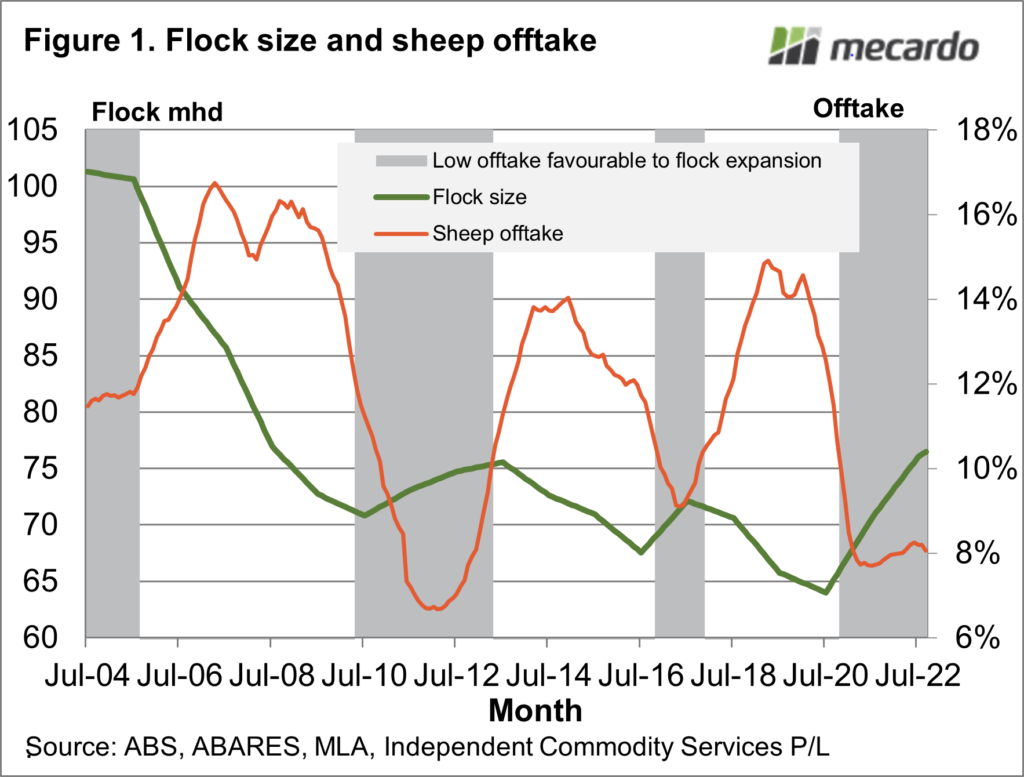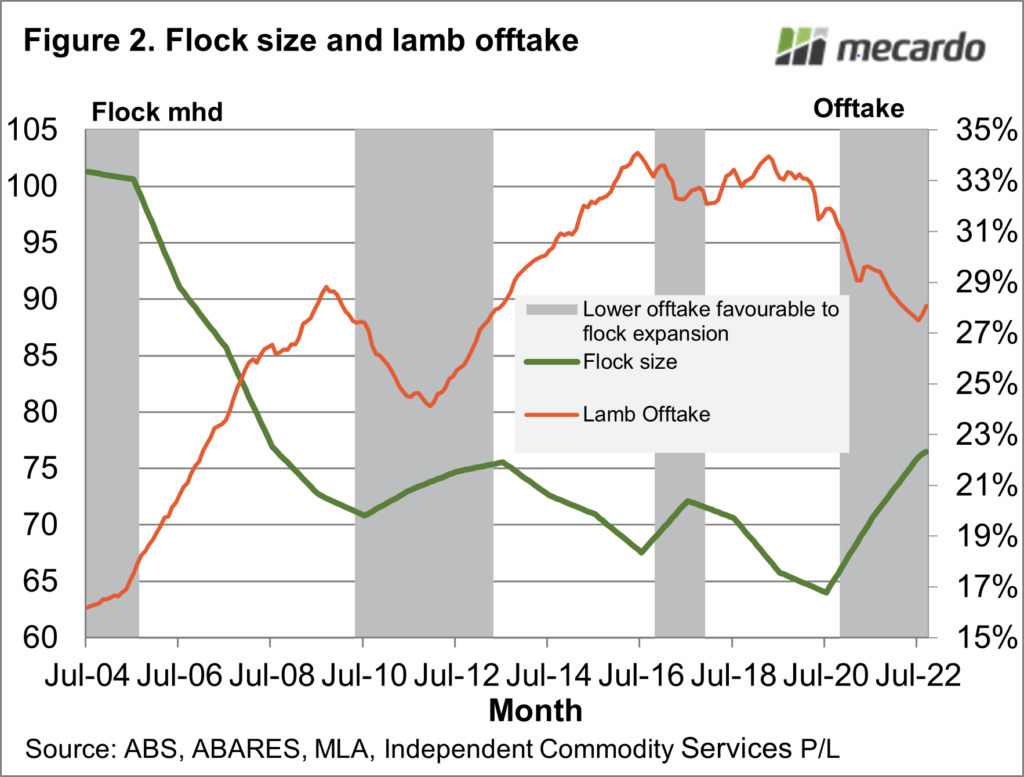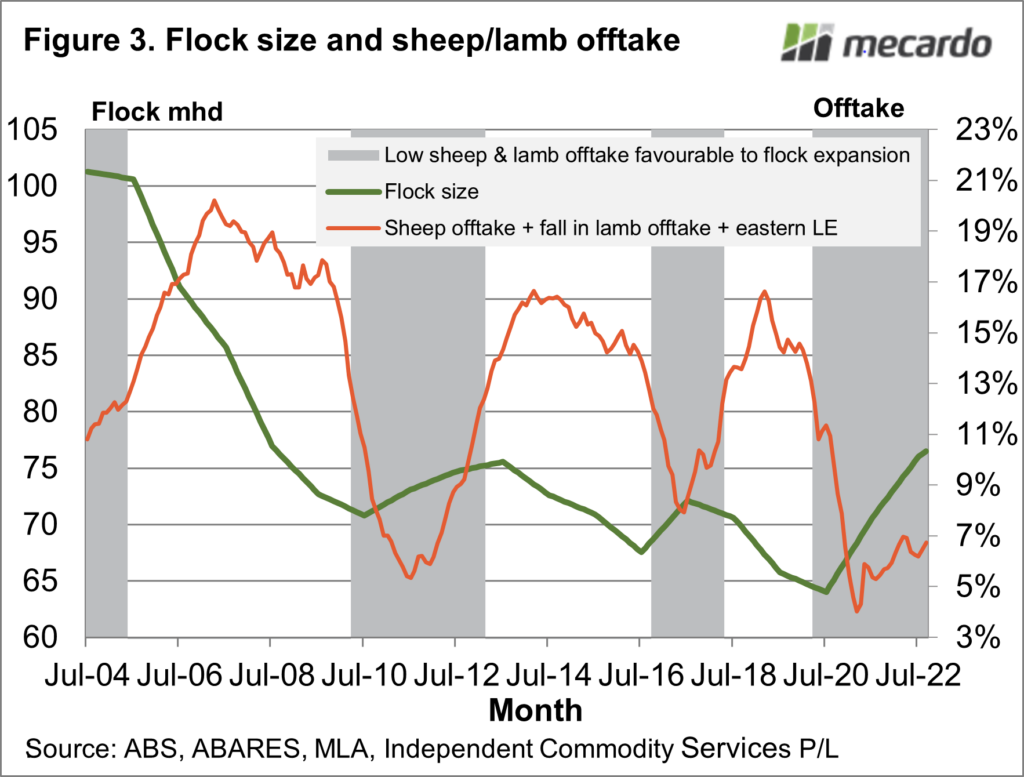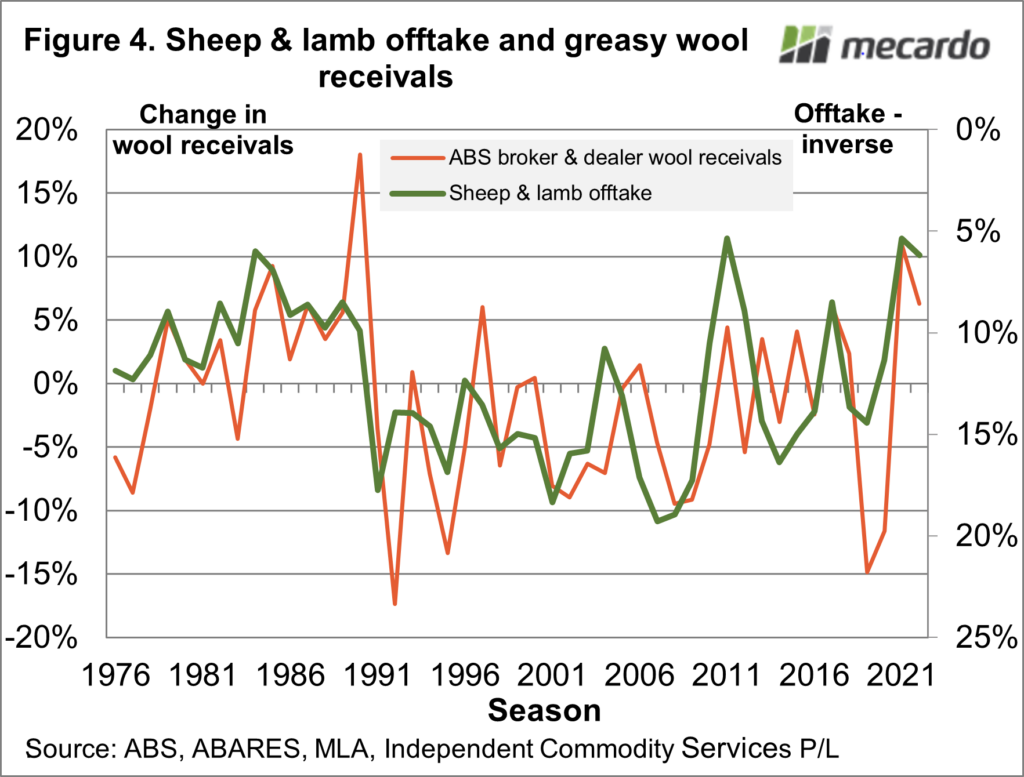The latest Australian Wool Forecasting Production Committee (AWPFC) wool projection is calling an increase in greasy wool production for this season of 4.9%, down from a 10% increase in 2020-21. With this in mind and good spring seasonal conditions in most sheep regions, Mecardo takes a look at sheep slaughter numbers and wool receivals.
In April Mecardo looked at sheep and lamb offtake levels (the rolling 12 month total of sheep and lambs sent to abattoirs expressed as a proportion of the flock size) in the Australian flock, concluding that the offtake was low enough to indicate a continued expansion of the Australian sheep flock.
Figure 1 shows the Australian flock size (all breeds) from 2004 onwards, along with the adult sheep offtake, which has fluctuated between 17% (where the flock is being shrunk) and 7% (where the flock is in an expansionary phase). The shaded area highlights the periods when the sheep offtake was low enough to support an expansion in the flock. The latest MLA sheep projections (view here), puts the Australian flock at 76 million, its largest size since 2008. At this stage it appears the recent increase in the Australian flock is mainly recovery from the 2017-2019 drought.
The other way of increasing sheep numbers is to reduce the sale of young sheep. Figure 2 shows the lamb offtake for the Australian flock, using the same format as Figure 1. The story for the lamb offtake is complicated by the structural change in the Australian flock from the early 1990s onwards, as the proportion of merino sheep dropped from extraordinary levels and prime lamb sheep expanded. The lamb offtake rose from a traditional level around 11% in the 1970s and 1980s, rising to 33-34% by 2016. Note that during the three periods of increasing flock size since 2006 the lamb offtake has fallen, reflecting the contribution of retained lambs as part of the process of increasing sheep numbers on farm.
Figure 3 combines the sheep offtake and changes in the lamb offtake, to provide a combined offtake which gives a more balanced view of the flow of sheep off-farm, the primary method by which Australian farmers adjust the flock size. It shows the combined sheep/lamb offtake to be still at low levels, indicating the flock to be still in an expansionary phase. Seasonal conditions continue to be favourable to increases in sheep numbers.
What does this mean for wool production? While more sheep implies more wool, the breed makeup of the flock will influence how the change in sheep numbers translates in changes in wool production. Figure 4 compares the season on season change wool received by brokers and dealers (as collated by the ABS) with the combined sheep/lamb offtake (which is shown on the right hand inverse scale), running from the mid-1970s to mid-2022. While the annual change in wool receivals is more volatile than the combined offtake, the offtake series does a good job of delineating the trend in the receivals data. The offtake series, which continues at low levels, shows that wool production this is season is very likely to increase again, probably by more than the 4.9% projected by the AWPFC.
What does it mean?
The Australian flock has bounced back from the low numbers of 2019, driven by favourable returns and seasonal conditions. Seasonal conditions remain favourable and offtake levels are still set at expansionary rates. The key question for further increases in sheep numbers is whether the wool/prime lamb enterprises can take farm resources away from beef cattle and crops in a meaningful way. The jury is out on this scenario.
Have any questions or comments?
Key Points
- Sheep and lamb offtake in the Australian flock remains low.
- This indicates a continued expansion in the flock this season.
- Wool production should continue to expand as a consequence.
Click on figure to expand
Click on figure to expand
Click on figure to expand
Click on figure to expand
Data sources: ABS, ABARES, MLA, AWPFC, ICS
















